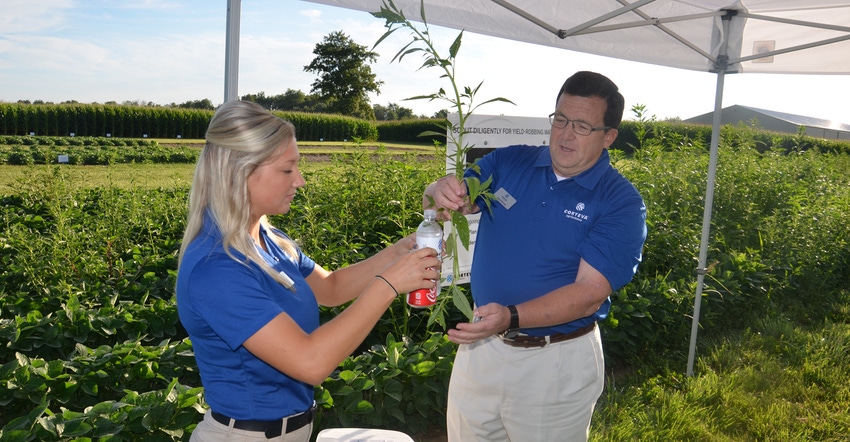
No one can write you a perfect prescription for eliminating waterhemp. If you haven’t seen this weed in your fields yet, you likely will soon.
Yet David Roome, product manager for Corteva Agriscience, believes if you consider his five key tips, you stand a good chance of gaining control over the weed. He outlined these tips recently at a field day at the Corteva research farm near Sheridan, Ind.
Here is how Roome would set out to tame waterhemp:
1. Scout for waterhemp soon after planting. If there are escapes, or if you’re counting on a postemergence application to take down waterhemp in your crops, you need to catch the weeds while they’re small, Roome says. “Herbicides will be much more effective,” he says. “A Coke can is about 4 inches tall. If they’re bigger than a Coke can, they’re already past the prime time for control.
“If they are several times taller than the Coke can, you’re asking a lot just to burn them back. You really need to monitor weed size closely early, and spray before weeds are more than 4 inches tall.”
2. Layer herbicides. Layering refers to starting early, perhaps with a burndown application depending upon tillage system, and for sure with a residual herbicide. In Corteva’s lineup, Resicore is a good residual choice for corn and Sonic for soybeans, Roome says.
“The goal is to have as low density of weed population after soybeans are up and growing as possible,” he says. “You can come back with another residual herbicide to help hold off weed growth until soybeans canopy and shade rows.”
3. Choose cultural practices to help control weeds. “Sit down with your seedsman and find a variety of soybeans that matches up well with your row width,” Roome says. Especially if you’re in 30-inch rows, you want a variety that closes the canopy as quickly as possible, he notes.
Tillage can help with weed control, but it’s not a given, Roome notes. If you do secondary tillage in the spring before planting, he explains, you have a better chance that herbicides will control waterhemp if you make the pass shortly before planting instead of planting into a stale seedbed.
4. Manage the weed population and seed bank. Each mature waterhemp plant can produce up to 250,000 seeds, Roome says. Even plants that are stunted but not killed by postemergence herbicides can produce viable seeds. The goal is to do what you can to manage the population. Otherwise, you’re likely to be met by a population explosion sooner or later when you didn’t think the problem was severe.
Scouting to know what’s in the field, timely spraying and rotating crops are all part of managing the weed population.
5. Focus on application technology. Choosing the right nozzle, spray pressure and total gallons of volume to apply per acre is all part of making herbicides work as they were designed, Roome says. He believes this is an area that people haven’t focused on enough.
“Something as simple as boom height can make a big difference in effectiveness of an application,” he says. If the boom gets too high on one side or the other, that can affect control. It could mean slowing down to get boom height right.
Learn more about these tips at poweroverweeds.com.
About the Author(s)
You May Also Like




